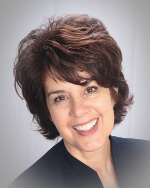|
www.HealthyHearing.com |
What are hearing aid earmolds?
Contributed by Debbie Clason, staff writer, Healthy Hearing Petite or Spock-like, protruding or tucked, flexible or rigid, our ears are as differently shaped and textured as the nose on our faces. Despite being the object of schoolyard ridicule and tell-tale indicators of embarrassment, our ears perform an important function. And for those who wear hearing aids, a custom-fit earmold can make a big difference in more clearly hearing the world around them. The basics of hearing aid earmolds
inside the ear canal and is customized to a person's unique ear shape. Earmolds versus domesThe parts of a hearing aid that fit inside the ear come in two basic styles: earmold or dome style. Earmolds are made of either plastic or silicone and custom-fit so that they sit snugly and precisely within the ear canal. They generally have small vents in them to let air through. Dome styles, which look like small cones, are not customized to a person's individual ear shape. These are stocked in standard sizes and you are given the size that fits best in your ear canal. They generally have large openings to let in lots of natural sound and ventilation. Depending on the type and degree of hearing loss, and the anatomy of the ear, the earmold can be canal size (small), half-shell size (medium) or full-shell size (large). The kind of earmold you wear also depends on your personal preference, the shape and texture of your ear, and your specific hearing aid. Why earmolds for hearing loss?For people who have trouble hearing at low frequencies or across most or all frequencies (known as flat hearing loss), earmolds deliver better sound because they fit snugly inside the ear. The snug fit keeps amplified sound from traveling back outside the canal and creating a feedback loop, which is a high-pitched whistling that's caused as the amplified sound leaks out and gets re-amplified. Earmolds are frequently used for people with severe to profound hearing loss.
"Earmolds are usually best for hearing loss across the entire speech spectrum," said Tom Contento, a board-certified hearing aid instrument specialist and owner of Contentment Hearing Care in Titusville, Fla. People who are already accustomed to wearing hearing aids may prefer the earmold style, while first time hearing aid users often opt for hearing aid domes because they are more comfortable, have less occlusion, and are easily changed, he said. "Every person is an individual," Contento said. "My job is to determine what is best for you. It's a case-by-case basis." For people who have high-frequency hearing loss (meaning they have trouble hearing higher-pitched sounds, like children's voices), dome-style hearing aids are often adequate. The importance of a good fit: hearing aid molds
power hearing aid with an earmold. (Picture courtesy of Oticon.) Since ears come in all shapes and sizes, it's important to have a hearing healthcare professional customize an earmold to fit the unique shape of your ear. These devices must be tight enough to prevent sound from leaking out and creating feedback—but not so tight they cause pain. The customization process is painless and includes making an impression of your ear canal and outer ear with a soft molding compound, much like a dentist would use to take an impression of your teeth. Common earmold problemsEven though earmolds are made from an actual impression of your own ear, they may need a bit of adjusting. And, since ears change shape and many earmolds are made from softer materials, your hearing care professional will likely check your earmold on an annual basis to make sure it still fits correctly. Troubleshooting earmold issuesSome of the common problems earmold users can experience include:
More on taking care of your hearing aids
Earmolds for noise exposureNon-hearing aid users may use earmolds, too. Custom earplugs and earmolds for sound protection are a great way to protect your hearing from loud sounds at work or at play. Musicians, stock car racers and even some professional football teams use earmolds with an acoustical chamber that blocks most noise while still allowing the wearer to understand speech. Some swimmers use specialized earmolds designed to keep water out of their ear canals. Hearing care professionals can help fit you with these types of earmolds, too. Taking care of your earmoldsThe earmold is an important part of your hearing instrument. Wipe it clean each night before you go to bed and let your hearing healthcare professional know if you ever encounter problems or discomfort. If you see any debris in the earmold openings or in the tubing that runs through it, be sure to clean your hearing aid using the instructions given to you by your hearing care practitioner. If your hearing has changed or you suspect you may have hearing loss, make an appointment to have your hearing evaluated. Visit our online directory to find a hearing center and to read verified patient reviews on professionals in your community. Debbie Clason, staff writer, Healthy Hearing
|
Featured clinics near me
Earzlink Hearing Care - Reynoldsburg
7668 Slate Ridge Blvd
Reynoldsburg, OH 43068

Find a clinic
We have more hearing clinic reviews than any other site!


 Debbie Clason holds a master's degree from Indiana University. Her impressive client list includes financial institutions, real estate developers, physicians, pharmacists and nonprofit organizations.
Debbie Clason holds a master's degree from Indiana University. Her impressive client list includes financial institutions, real estate developers, physicians, pharmacists and nonprofit organizations.